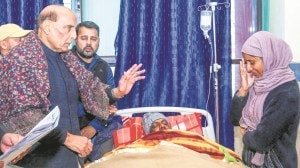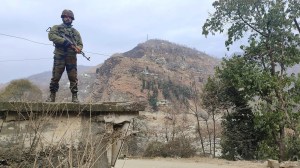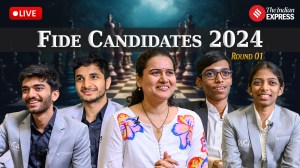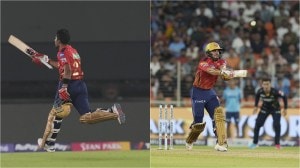- India
- International
UPSC Essentials | Mains answer practice — GS 1 (Week 44)
Are you preparing for UPSC CSE 2024? Here are questions from GS paper 1 for this week with essential points as the fodder for your answers. Do not miss points to ponder and answer in the comment box below. Try them out
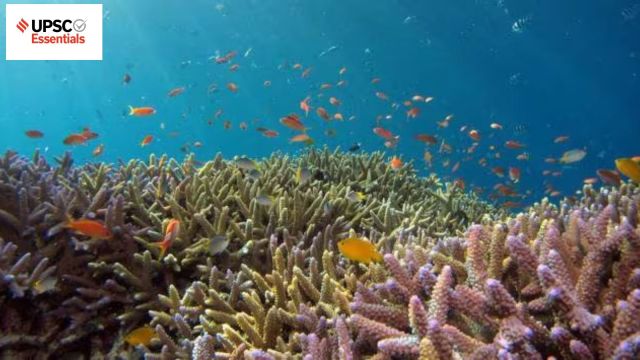 The Rs 4,000-crore mission, announced last year, aims to improve the understanding of oceans, their biodiversity, climate change along with the development and demonstration of technology to undertake future ocean explorations. Attempt question on efforts taken by the government for the conservation of resources of the Indian coastline (Unsplash/ Representational)
The Rs 4,000-crore mission, announced last year, aims to improve the understanding of oceans, their biodiversity, climate change along with the development and demonstration of technology to undertake future ocean explorations. Attempt question on efforts taken by the government for the conservation of resources of the Indian coastline (Unsplash/ Representational)UPSC Essentials brings to you its initiative for the practice of Mains answer writing. It covers essential topics of static and dynamic parts of the UPSC Civil Services syllabus covered under various GS papers. This answer-writing practice is designed to help you as a value addition to your UPSC CSE Mains. Attempt today’s answer writing on questions related to topics of GS-1 to check your progress.
🚨 The Indian Express UPSC Essentials brings to you the March edition of its monthly magazine. Click Here to read. Share your views and suggestions in the comment box or at manas.srivastava@indianexpress.com🚨
QUESTION 1
India’s coastline zone has abundant coastal and marine ecosystems. Discuss the efforts taken by the government for the conservation of resources of the Indian coastline.
QUESTION 2
The Vijayanagara Empire marked a watershed moment in Indian architectural history. Discuss.
General points on the structure of the answers
Introduction
— The introduction of the answer is essential and should be restricted to 3-5 lines. Remember, a one-liner is not a standard introduction.
— It may consist of basic information by giving some definitions from the trusted source and authentic facts.
Body

— It is the central part of the answer and one should understand the demand of the question to provide rich content.
— The answer must be preferably written as a mix of points and short paragraphs rather than using long paragraphs or just points.
— Using facts from authentic government sources makes your answer more comprehensive. Analysis is important based on the demand of the question, but do not over analyse.
— Underlining keywords gives you an edge over other candidates and enhances presentation of the answer.
— Using flowcharts/tree-diagram in the answers saves much time and boosts your score. However, it should be used logically and only where it is required.
Way forward/ conclusion
— The ending of the answer should be on a positive note and it should have a forward-looking approach. However, if you feel that an important problem must be highlighted, you may add it in your conclusion. Try not to repeat any point from body or introduction.
— You may use the findings of reports or surveys conducted at national and international levels, quotes etc. in your answers.
Self Evaluation
— It is the most important part of our Mains answer writing practice. UPSC Essentials will provide some guiding points or ideas as a thought process that will help you to evaluate your answers.
THOUGHT PROCESS
You may enrich your answers by some of the following points
QUESTION 1: India’s coastline zone has abundant coastal and marine ecosystems. Discuss the efforts taken by the government for the conservation of resources of the Indian coastline.
Introduction:
— India’s coastal and marine habitats include mangroves, coral reefs, sea grasses, salt marshes, mud flats, estuaries, lagoons, and diverse flora and fauna.
— However, despite their ecological importance and significance to the national economy, these resources have not received proper protection and are under threat.
— The World Bank-financed Integrated Coastal Zone Management Project, part of the national coastal zone management programme, aims to strike a balance between development and the protection of sensitive ecosystems.
Body:
You may incorporate some of the following points in the body of your answer:
‘Vision of New India by 2030’
(a) A manned submersible will be developed to carry three people to a depth of 6,000 metres in the ocean with suite of scientific sensors and tools to explore deep sea mining possibilities.
(b) An Integrated Mining System will be developed for mining Polymetallic Nodules from 6,000-m depth in the central Indian Ocean.
(c) Bio-prospecting of deep-sea flora and fauna including microbes and studies on sustainable utilization of deep-sea bio-resources will also be undertaken with the aim of studying, documenting and conservation of deep-sea ecology.
— Many aquatic species are legally protected under India’s Wild Life Protection Act of 1972. India has 31 significant Marine Protected Areas that span coastal areas and were established under the Wildlife Protection Act of 1972.
— The National Committee on Mangroves, Wetlands, and Coral Reefs, established in 1993, advises the government on marine species-related policies and activities.
— The Coastal Regulation Zone (CRZ) notification (1991 and later editions) prohibits development activities and garbage disposal in fragile coastal habitats.
— India is launching a flagship initiative, the PradhanMantriMatsyaSampadaYojana (PMMSY), to promote the sustainable and responsible development of the fisheries sector in India. Two of the scheme’s primary goals are:
(a) Maximising fisheries potential in a sustainable, responsible, inclusive, and equitable way, and
(b) Establishing a strong fisheries management and regulatory framework.
Conclusion:
— Local community involvement is frequently viewed as an essential component of marine resource conservation. The Centre for Marine Living Resources and Ecology (CMLRE) is executing a national R&D programme on Marine Living Resources (MLR) with a Societal Services component to assist the fishermen of the Lakshadweep Islands.
— India is encouraging sustainable marine fisheries activities, developing fisheries management plans, developing Integrated Modern Coastal Fishing Villages, promoting Sagar Mitra, installing bio-toilets in fishing vessels, communication and tracking devices, providing livelihood support to fisher families during the fish ban period, and so on in order to conserve fisheries resources.
(Source: Nod for mission to explore marine resources, worldbank.org, pib.gov.in)
Points to Ponder
States having a coastal region
Sundarbans
Corals
Fishing sector
Related Previous Year Questions
Comment on the resource potentials of the long coastline of India and highlight the status of natural hazard preparedness in these areas. (2023)
What are the consequences of spreading of ‘Dead Zones’ on marine ecosystems? (2018)
QUESTION 2: The Vijayanagara Empire marked a watershed moment in Indian architectural history. Discuss.
Introduction:
— Harihara I of the Sangama Dynasty founded the Vijayanagara Empire. The kingdom flourished from 1336 to 1646.
— The kingdom reached its height under Krishna Deva Raya’s reign (1509-1529), when it had military superiority over neighbouring kingdoms like as the Bahmani Sultanate, the Golconda Sultanate, and the Odishan Gajapatis.
— At its apex, the kingdom spanned from Goa on the Konkan coast to sections of southern Odisha in the east and the subcontinent’s southernmost point in the south.
Body:
You may incorporate some of the following points in the body of your answer:
— The Vijayanagara Empire contributed significantly to culture and architecture. Poetry, writing styles, and literature in Tamil, Telugu, Kannada, and Sanskrit flourished at this time.
— The most noticeable aspect of Vijayanagara’s location is the natural basin formed by the Tungabhadra River, which flows north-east.
— The fort was accessible through well-guarded gates that connected the city to main roadways. Gateways were distinguishing architectural elements that frequently identified the structures to which they controlled access.
— The construction of temples in the region had a long history, going back to dynasties such as the Pallavas, Chalukyas, Hoysalas and Cholas. Temples functioned as centres of learning. The walls of the Hazara Rama Temple include scenes from the Ramayana.
— Virupaksha temple was erected over decades, with inscriptions indicating that the first shrine was established in the ninth and eleventh centuries, and it was significantly expanded with the formation of the Vijayanagara Empire.
Conclusion:
— Today, Vijayanagara’s capital, Hampi, is a UNESCO World Heritage Site recognised for its sophisticated fortifications, temples, and other architectural marvels.
— Vijayanagara is recognised as a period of “cultural conservatism” in which ancient Hinduism was retained amidst the subcontinent’s rising Islamization, notably in the north.
(Source: ‘Victory City’: A brief history of the kingdom of Vijayanagara, in which Salman Rushdie’s latest novel is situated by Arjun Sengupta, ncert.nic.in)
Points to Ponder
Vitthala Temple
Krishnadeva Raya
Pallavas, Chalukyas, Hoysalas and Cholas
Hazara Rama Temple
Related Previous Year Questions
Discuss the main contributions of Gupta period and Chola period to Indian heritage and culture. (2022)
Pala period is the most significant phase in the history of Buddhism in India. Enumerate. (2020)
Krishnadeva Raya, the King of Vijayanagar, was not only an accomplished scholar himself but was also a great patron of learning and literature. Discuss. (2016)
Previous Mains Answer Practice
UPSC Essentials: Mains answer practice — GS 1 (Week 43)
UPSC Essentials: Mains answer practice — GS 1 (Week 42)
UPSC Essentials: Mains answer practice — GS 2 (Week 43)
UPSC Essentials: Mains answer practice — GS 2 (Week 44)
UPSC Essentials: Mains answer practice — GS 3 (Week 43)
UPSC Essentials: Mains answer practice — GS 3 (Week 44)
Subscribe to our UPSC newsletter and stay updated with the news cues from the past week.
Apr 05: Latest News
- 01
- 02
- 03
- 04
- 05






